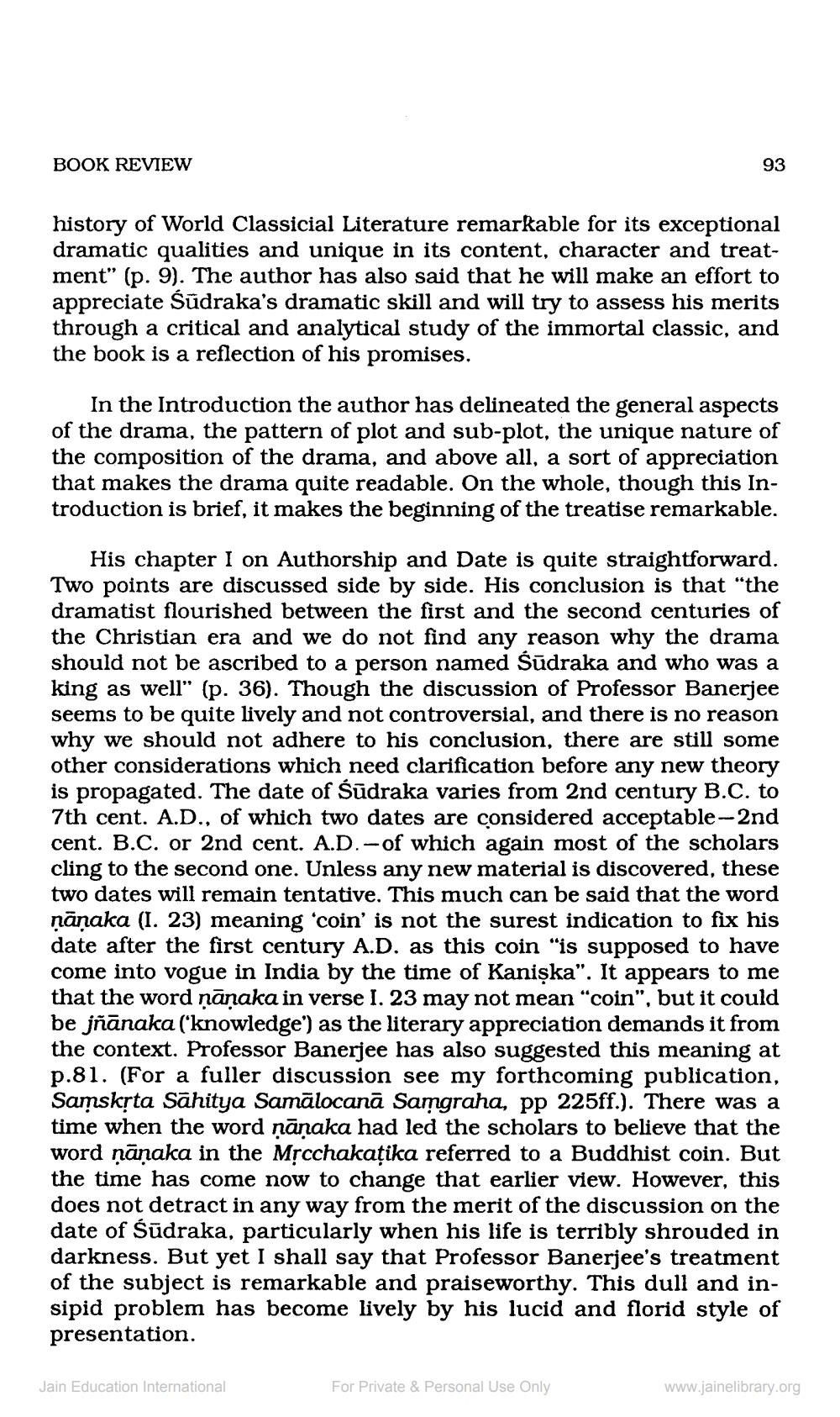Book Title: Jain Journal 1996 01 Author(s): Jain Bhawan Publication Publisher: Jain Bhawan Publication View full book textPage 4
________________ BOOK REVIEW 93 history of World Classicial Literature remarkable for its exceptional dramatic qualities and unique in its content, character and treatment" (p. 9). The author has also said that he will make an effort to appreciate Südraka's dramatic skill and will try to assess his merits through a critical and analytical study of the immortal classic, and the book is a reflection of his promises. In the Introduction the author has delineated the general aspects of the drama, the pattern of plot and sub-plot, the unique nature of the composition of the drama, and above all, a sort of appreciation that makes the drama quite readable. On the whole, though this Introduction is brief, it makes the beginning of the treatise remarkable. His chapter I on Authorship and Date is quite straightforward. Two points are discussed side by side. His conclusion is that "the dramatist flourished between the first and the second centuries of the Christian era and we do not find any reason why the drama should not be ascribed to a person named Sūdraka and who was a king as well” (p. 36). Though the discussion of Professor Banerjee seems to be quite lively and not controversial, and there is no reason why we should not adhere to his conclusion, there are still some other considerations which need clarification before any new theory is propagated. The date of Sūdraka varies from 2nd century B.C. to 7th cent. A.D., of which two dates are considered acceptable--2nd cent. B.C. or 2nd cent. A.D.-of which again most of the scholars cling to the second one. Unless any new material is discovered, these two dates will remain tentative. This much can be said that the word nanaka (I. 23) meaning 'coin' is not the surest indication to fix his date after the first century A.D. as this coin "is supposed to have come into vogue in India by the time of Kanişka". It appears to me that the word ņāņaka in verse I. 23 may not mean "coin", but it could be jñānaka (knowledge') as the literary appreciation demands it from the context. Professor Banerjee has also suggested this meaning at p.81. (For a fuller discussion see my forthcoming publication, Samsksta Sahitya Samālocanā Samgraha, pp 225ff.). There was a time when the word ņānaka had led the scholars to believe that the word ņānaka in the Mşcchakatika referred to a Buddhist coin. But the time has come now to change that earlier view. However does not detract in any way from the merit of the discussion on the date of Śūdraka, particularly when his life is terribly shrouded in darkness. But yet I shall say that Professor Banerjee's treatment of the subject is remarkable and praiseworthy. This dull and insipid problem has become lively by his lucid and florid style of presentation. Jain Education International For Private & Personal Use Only www.jainelibrary.orgPage Navigation
1 2 3 4 5 6 7 8 9 10 11 12 13 14 15 16 17 18 19 20 21 22 23 24 25 26 27 28 29 30 31
